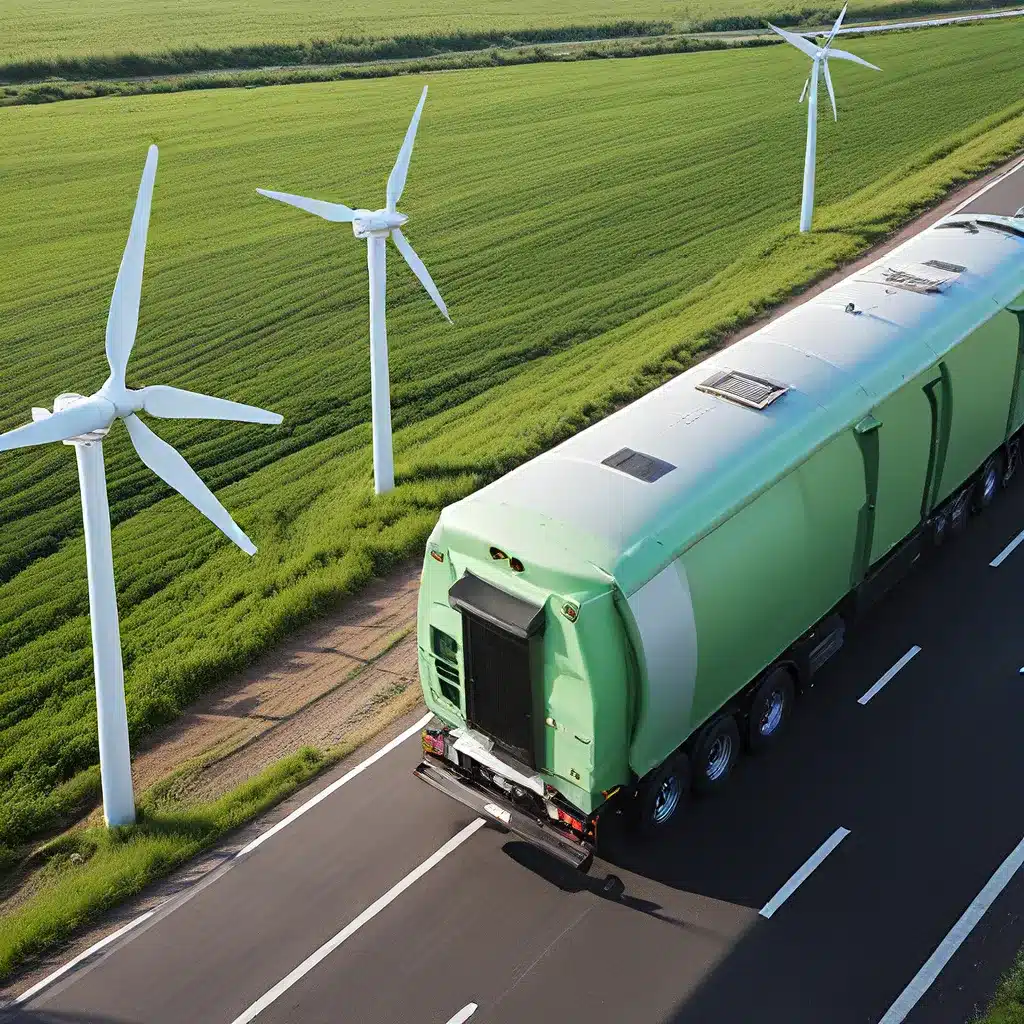
Driving Towards a Sustainable Future
As I gaze out the window of my electric vehicle, I can’t help but feel a sense of excitement and optimism about the future of transportation. The landscape is rapidly changing, and renewable energy is at the forefront of this transformation. Gone are the days of relying solely on fossil fuels – now, we have an array of eco-friendly options that are not only better for the environment, but also more cost-effective and efficient.
One technology that has particularly caught my attention is renewable natural gas (RNG). This fuel, derived from organic waste, can dramatically reduce carbon emissions by over 300% compared to traditional diesel. What’s more, it’s becoming increasingly accessible, with Clean Energy Fuels – the largest provider of RNG for transportation in North America – building a network of over 600 fueling stations across the continent.
But RNG is just the tip of the iceberg. The U.S. Department of Energy’s Office of Energy Efficiency and Renewable Energy (EERE) is leading the charge when it comes to sustainable transportation. Through the Bipartisan Infrastructure Law, they’re funding the development of charging infrastructure, advanced battery technologies, and innovative mobility solutions that are making clean energy vehicles more accessible than ever.
The Rise of Clean Vehicles
One of the most exciting advancements in the world of sustainable transportation is the Cummins X15N natural gas engine. This game-changing technology combines the powerful carbon reduction benefits of RNG with the performance needed for long-haul trucking applications. Imagine a future where the heavy-duty vehicles that transport our goods and services are running on clean, renewable fuel – it’s a vision that’s rapidly becoming a reality.
But it’s not just heavy-duty vehicles that are getting a green makeover. Hybrid electric vehicles, plug-in hybrid electric vehicles, and all-electric vehicles are becoming increasingly popular among consumers. These advanced technologies not only save on fuel costs, but they also emit fewer greenhouse gases, making them a more eco-friendly choice for everyday driving.
Empowering the Clean Energy Champion
As I navigate the roads in my sustainable vehicle, I can’t help but feel a sense of personal responsibility. After all, I’m not just a driver – I’m a Clean Energy Champion. And the good news is, I’m not alone. Millions of Americans are joining the movement, advocating for renewable energy and taking small but impactful actions to reduce their carbon footprint.
Whether it’s researching and purchasing a fuel-efficient vehicle, taking advantage of the latest energy-saving tips, or exploring the diverse array of alternative fueling options, we all have a role to play in shaping a greener future for transportation. And with the support of organizations like EERE, the path forward is becoming clearer and more accessible than ever.
Collaborating for a Sustainable Future
Of course, this transformation doesn’t happen in a vacuum. It requires the collective efforts of government agencies, businesses, and individual citizens. That’s why the creation of the Joint Office of Energy and Transportation through the Bipartisan Infrastructure Law is such a game-changer. By facilitating collaboration between the Department of Energy and the Department of Transportation, this initiative is poised to accelerate the development and deployment of sustainable transportation solutions.
From advancements in maritime decarbonization to the development of innovative renewable energy solutions, the clean energy revolution is in full swing. And as I continue my journey, I can’t help but feel a sense of excitement and optimism about the future. After all, with the resources and expertise of the EERE and its national laboratories, the possibilities for sustainable transportation are truly limitless.
Embracing the Uncertainty
Of course, as with any transformative technology, there are still some uncertainties and debates surrounding the future of renewable energy in transportation. Some experts believe that advanced battery technologies may hold the key to even greater efficiency and affordability, while others suggest that alternative fuels like hydrogen could also play a significant role.
And while the data and analysis around these topics can be complex, I find myself drawn to the sense of wonder and discovery that comes with exploring the unknown. After all, isn’t that what the clean energy revolution is all about – pushing the boundaries of what’s possible and embracing the unknown?
Conclusion: A Fuel-Efficient Future
As I pull into the Clean Energy fueling station, I can’t help but feel a sense of pride and accomplishment. I’m not just a driver – I’m a Clean Energy Champion, doing my part to shape a more sustainable future for transportation. And with the support of innovative technologies, collaborative initiatives, and a growing community of eco-conscious individuals, I know that the road ahead is paved with opportunity.
So, let’s continue to explore, experiment, and embrace the uncertainty. Because if there’s one thing I’m sure of, it’s that the future of transportation is renewable, efficient, and incredibly exciting.

